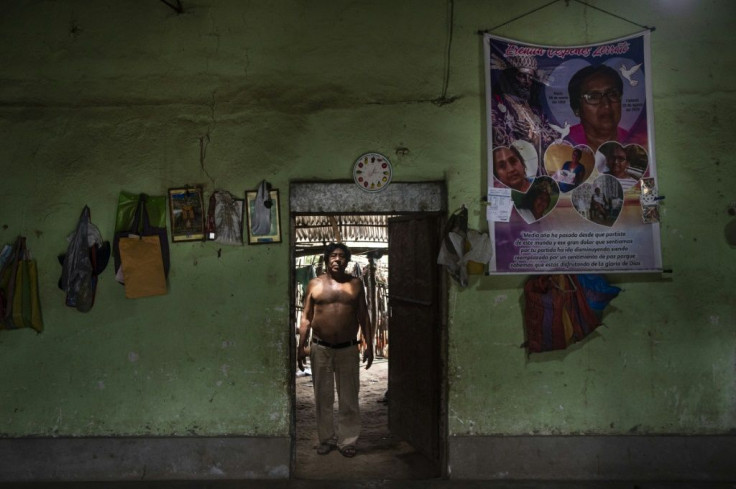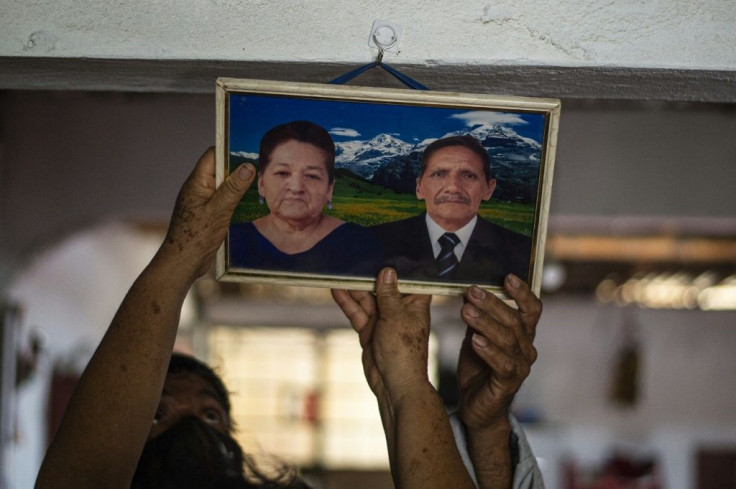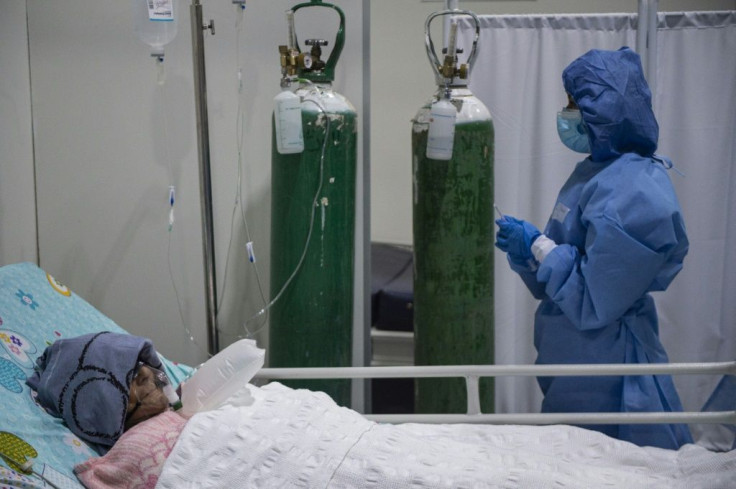Only Photos Left As Peruvians Mourn Their Covid Dead
Idyllic images of dead loved ones walking in flowery fields or drifting in the clouds grace the walls of too many a humble home in Piura, northern Peru: they are retouched photos of coronavirus victims.
The pictures, many in the form of large posters, provide small comfort to survivors in the region hardest hit by the pandemic in the country with the world's highest death rate per capita.
"This damn disease took my parents. It's a wound so deep you cannot erase it," said Esmilda Alvarado, 58, showing AFP a photo of her mother and father superimposed on a scene of snow-topped mountains and blue sky.
A granddaughter brought the virus when she came to visit, Alvarado said.

"My mother was an enterprising woman, my father too... I took care of them, stayed with them -- to the point where I had to stop working to care for them," she recounted.
Before the pandemic arrived, Piura -- a city of 400,000 people some 1,000 kilometers (620 miles) north of Lima and near the Ecuador border -- was famous for its sunny beaches, fishing, a mineral-rich desert and fertile agricultural land.
But almost overnight, it became the epicenter of the outbreak in Peru, which has registered more deaths per capita than any other country -- more than 607 per 100,000 inhabitants to date, according to AFP's tally of official data.
By comparison, neighboring Chile has reported 198 deaths per 100,000, Brazil 286, the United States 225 and Mexico 224.

In May, Peru more than doubled its official death toll after adjusting its counting criteria, making it the country with the highest per capita mortality rate.
Peru, a country of 33 million people, has so far registered 2.2 million cases and more than 200,000 Covid-19 deaths -- about 12,000 of them in the Piura region alone.

Rosa Elias de Montalban, 65, was widowed. An image of her husband with two large wings, like those of an angel, now graces the wall.
"I keep it because I see him there every day and he's still here in the house, as if he were alive," she told AFP through tears.
Experts say Peru was so hard hit because of a high poverty rate of about 30 percent, a large sector of the workforce depending on informal employment, overcrowded housing and a precarious health system.
Many Peruvians disregarded a mandatory lockdown because they needed to work to survive.

When hospital beds started running out in Sullana, a town of some 230,000 people and the second-largest in the Piura region, the health ministry requisitioned the municipal football stadium.
"We had to take the locker rooms and other spaces to fashion a makeshift hospital," said infectious disease expert Luis Alfredo Espinoza.
An intensive care unit for 16 patients and beds for another 240 coronavirus sufferers were set up in the stands.
Looming large at the stadium are three storage tanks holding 13,000 liters of oxygen, a commodity critical for coronavirus treatment and in low supply for several months at the height of Peru's battle against the outbreak.
"I couldn't breathe, my chest sounded like a whistle," recovering patient Maria Magdalena Yarleque, 57, told AFP.
"I entrusted myself to my heavenly father."
After a peak in August, the stadium-based hospital now boasts empty beds as Peru's infection rate has been falling for several months.
"I beat the disease, thank God," said Segundo Calderon, a 69-year-old mango farmer who was hospitalized for a month.
Health experts are cautioning Peruvians against letting their guard down.
"In the last 15 days, there has been an increase in the Delta variant. The third wave is coming," said Espinoza.
Medical teams in protective overalls are criss-crossing Piura's villages looking for people to vaccinate.
To date, 54 percent of Peruvians over the age of 12 have received two vaccine doses.
"We are giving priority to the vaccine," said Oscar Berru Vargas, who runs a vaccination campaign in the Piura region.
"The vaccine is the only way to be protected against Covid."
© Copyright AFP 2024. All rights reserved.











